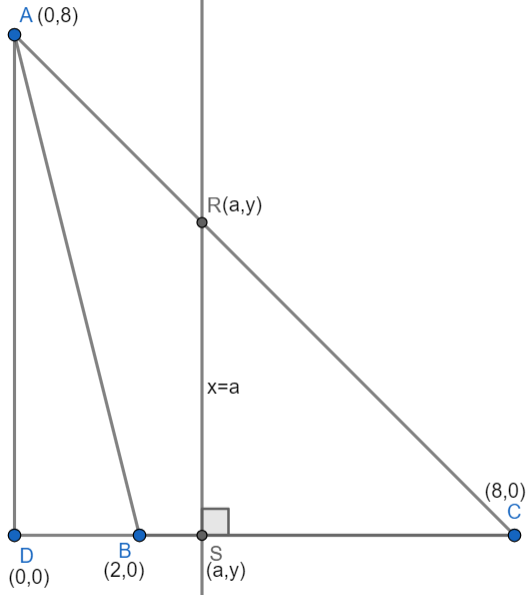Max0815, you are very close; all you need to consider is the potential overlap. Look at the diagrams below.

Source: http://mathworld.wolfram.com/images/eps-gif/QueensMax_800.gif
Look at these two arrangements of the rooks. The first set you considered was that every rook occupied every column. The second set you considered was that every rook occupied every row. The diagrams above show some positions that satisfy both conditions; all the rooks are in every column and every row only once.
In order to figure out the overlap, ask yourself the following: How many ways can each rook occupy one and only one row and column?
Edit: I realize that the diagrams contain queens--not rooks. Oops! I think the main point still remains, however, so I will keep the diagrams as is.
Constructing a diagram is a crucial step here; digesting all that information visually is extremely difficult without a visual aid. I have concocted one that I am proud of. I have tried to label everything in this diagram for your convenience. This problem most likely has many avenues toward achieving the correct answer, but I will present my approach for you:

In the diagram above, I have added point D, which is the intersection of point A and point C. The point lies on the origin. Let's focus on some characteristics regarding \(\triangle ACD\) .
Point A and point D have the same x-coordinate, so a vertical segment connects them. Point C and point D share the same y-coordinate, so they must be connected with a horizontal segment. \(\overline{AD}\perp\overline{DC}\) because horizontal and vertical lines are always perpendicular; thus, \(m\angle ADC=90^{\circ}\).
\(AD=DC=8\), so \(\triangle ACD\) is also an isosceles triangle.
A triangle that is both right and isosceles is also known as a 45-45-90 triangle. It is possible to observe these similarities with \(\triangle RSC\).
\(\overline{AD}\parallel\overline{RS}\) because they are both vertical lines. Whenever a parallel line cuts through a triangle, the resulting triangles are similar. In this case, \(\triangle ADC\sim\triangle RSC\) .
\(DC=8\) and \(DS=a\) , so \(CS=8-a\) . Because \(\triangle RSC\) is isosceles, \(RS=CS=8-a\) . The area of this triangle, according to the original problem, is 12.5. We know the lengths of the side lengths, so we can determine the value of a.
| \(12.5=\frac{1}{2}(8-a)(8-a)\) | Multiply by 2 on both sides to solve for a. We are using the area of a triangle to generate this equation. |
| \(25=(8-a)^2\) | Take the square root of both sides. |
| \(5=|8-a|\) | |
Yes, it is possible to solve for a here, and it is relatively simple from here on out. However, we can take a slight shortcut. The end goal is to determine the difference of x- and y-coordinates, but 8-a represents the height of the triangle. Since 8-a=5, we know that the y-coordinate is 5.
(3,5) is the coordinate of point R. \(|3-5|=2\) is the positive difference.
A standard deck of 52 cards comprises 13 cards of any particular suit. Although the problem never explicitly states whether or not replacement occurs, I will assume that there is no replacement.
The problem is a compound event because there are two separate events that can satisfy the condition. They are the following:
Calculating the probabilities of each event separately is probably the best way to undertake this problem.
| \(P(\text{2 hearts})=P(\text{1st heart})\cdot P(\text{2nd heart})\) | |
| \(P(\text{1st heart})=\frac{13}{52}=\frac{1}{4}\) | In a conventional 52-card deck, there are 13 hearts. I have simplified this fraction. |
| \(P(\text{2nd heart})=\frac{12}{51}=\frac{4}{17}\) | Because I have assumed that there is no replacement, there will be only 51 cards remaining to choose from when someone draws the next heart. The removal of one heart caused the heart count to drop to 12 instead of 13. |
| \(P(\text{2 hearts})=\frac{1}{4}\cdot \frac{4}{17}=\frac{1}{17}\) | |
Of course, you could go through the above ordeal again; you could calculate the probability of the event of the first diamond and second diamond and then do the multiplication. However, you may be able to observe the parallelism. 13 diamonds are included in a 52-card deck. Drawing the first diamond and second diamond would, therefore, be probabilistically identical to drawing two hearts. This means that I already know the probability of drawing two diamonds: \(\frac{1}{17}\) .
| \(P(\text{2 hearts or 2 diamonds})=P(\text{2 hearts})+P(\text{2 diamonds})-P(\text{2 hearts and 2 diamonds})\) | When calculating compound events, this formula is used. Because there is no overlap, we can disregard it. |
| \(P(\text{2 hearts or 2 diamonds})=\frac{1}{17}+\frac{1}{17}-0=\frac{2}{17}\) | There you go! |
The interior angle of a regular polygon can be determined with the following formula:
\(\frac{180(n-2)}{n}\) where n represents the number of sides the polygon has
The measure of each exterior angle of a regular polygon can be determined using the following formula:
\(\frac{360}{n}\) where n represents the number of sides the polygon has
According to the problem, "the measure of each interior angle is four times the measure of each exterior angle," so we can create an equation for this like the following:
| \(\frac{180(n-2)}{n}=4\left(\frac{360}{n}\right)\) | Simplify both sides of the equation. |
| \(\frac{180n-360}{n}=\frac{1440}{n}\) | Because the denominators are equal, simply set the numerators equal to each other and solve. |
| \(180n-360=1440\) | Add 360 to both sides. |
| \(180n=1800\) | Divide by 180 |
| \(n=10\text{ sides}\) | |